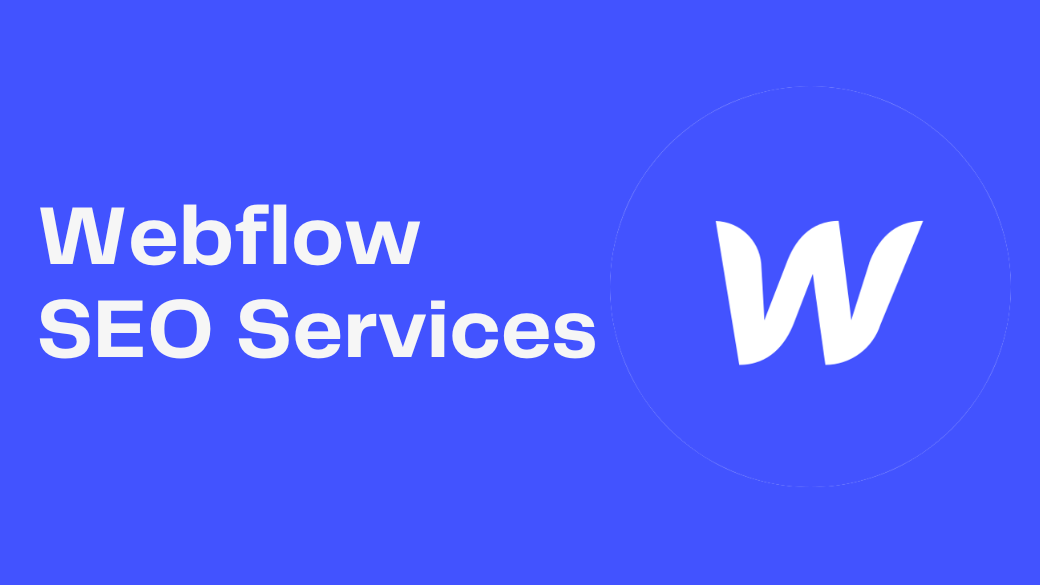Webflow SEO refers to the process of optimizing websites built using the Webflow CMS platform for better search engine visibility. Webflow is a web design and development platform that allows users to create visually appealing and interactive websites without writing code.
However, like any website, a Webflow site requires SEO optimization to improve its ranking on search engine results pages (SERPs) and attract organic traffic.
What is Webflow?
Webflow is a user-friendly web design and development platform that empowers users to create professional websites visually without extensive coding knowledge. It offers responsive design, custom coding options, a powerful content management system, e-commerce capabilities, and hosting services.
Webflow is favored by designers, developers, and businesses for its flexibility, enabling the efficient creation of custom websites efficiently. It bridges design and development, making web design accessible to a broad audience.
Here are some Key Aspects of Webflow SEO:
Keyword Research:
To begin, undertake extensive keyword research in your niche to uncover suitable terms. To locate high-value keywords with little competition, use tools like Google Keyword Planner and SEMrush.
On-Page Optimization:
On-page SEO is necessary for any website. This entails optimizing specific pages on your website, which are developed and designed by Webflow.
- Incorporate important keywords naturally into your text, headings, and meta tags.
- For each page, provide concise and descriptive meta titles and meta descriptions.
- Using structured data markup (Schema.org) to provide search engines with more context.
Site Structure:
Organize the material on your Webflow site rationally, with a clear structure and navigation. This assists both users and search engines in understanding the relationships between various sites.
Mobile Optimization:
Check to see if your Webflow site is responsive and works effectively on mobile devices. Google ranks mobile-friendly websites higher in its search results.
Page Loading Speed:
Optimize your site to load quickly. This includes picture compression, browser caching, and code optimization to increase overall page speed. Nowadays, it is very effective for Webflow SEO.
SSL Certificate:
To secure your website using HTTPS, install an SSL certificate. Users and search engines both appreciate secure websites. You can easily get an SSL certificate for your site while using the Webflow platform.
XML Sitemap:
Create and send an XML sitemap for your Webflow site to search engines like Google, Bing, and Yahoo. This makes it easier for search engines to crawl and index your sites.
Canonicalization:
To avoid duplicate content issues, use canonical tags. This is useful when you have similar or duplicate content across multiple URLs.
Alt Tags:
Use descriptive alt tags for every image to improve accessibility and provide context to search engines.
Social Media Integration:
In order to increase social sharing and engagement, incorporate social media sharing buttons and metadata into your Webflow site.
Performance Monitoring:
Use tools like Google Analytics and Google Search Console to track the performance of your website on a regular basis. To make informed SEO modifications, analyze traffic data, user behavior, and keyword performance.
Backlink Building:
Implement tactics to obtain high-quality backlinks from credible and relevant websites to your Webflow site.
Content Strategy:
Create a content strategy centered on producing high-quality, relevant, and engaging content for your target audience. To keep your site up to date, publish new content on a regular basis, such as blog entries, articles, or videos.
Monitoring and Analysis:
Monitor website performance, check keyword rankings, and analyze user behavior with tools like Google Analytics. Review and adjust your SEO approach on a regular basis, depending on data insights.
Local SEO (if applicable):
Optimize your Google My Business page and obtain local business citations for local businesses. Encourage customers to leave evaluations and ratings.
Finale Thought
Webflow SEO has various tools and settings that assist users in improving their websites, such as SEO fields for each page and the option to alter URL structures. Effective SEO on Webflow, as with any platform, requires a good awareness of SEO best practices as well as an ongoing dedication to monitoring and improving your site’s performance in search engines.
I can effectively boost the SEO of Webflow websites and increase visibility in search engine results by focusing on these areas and remaining up to speed with SEO best practices and algorithm changes.

